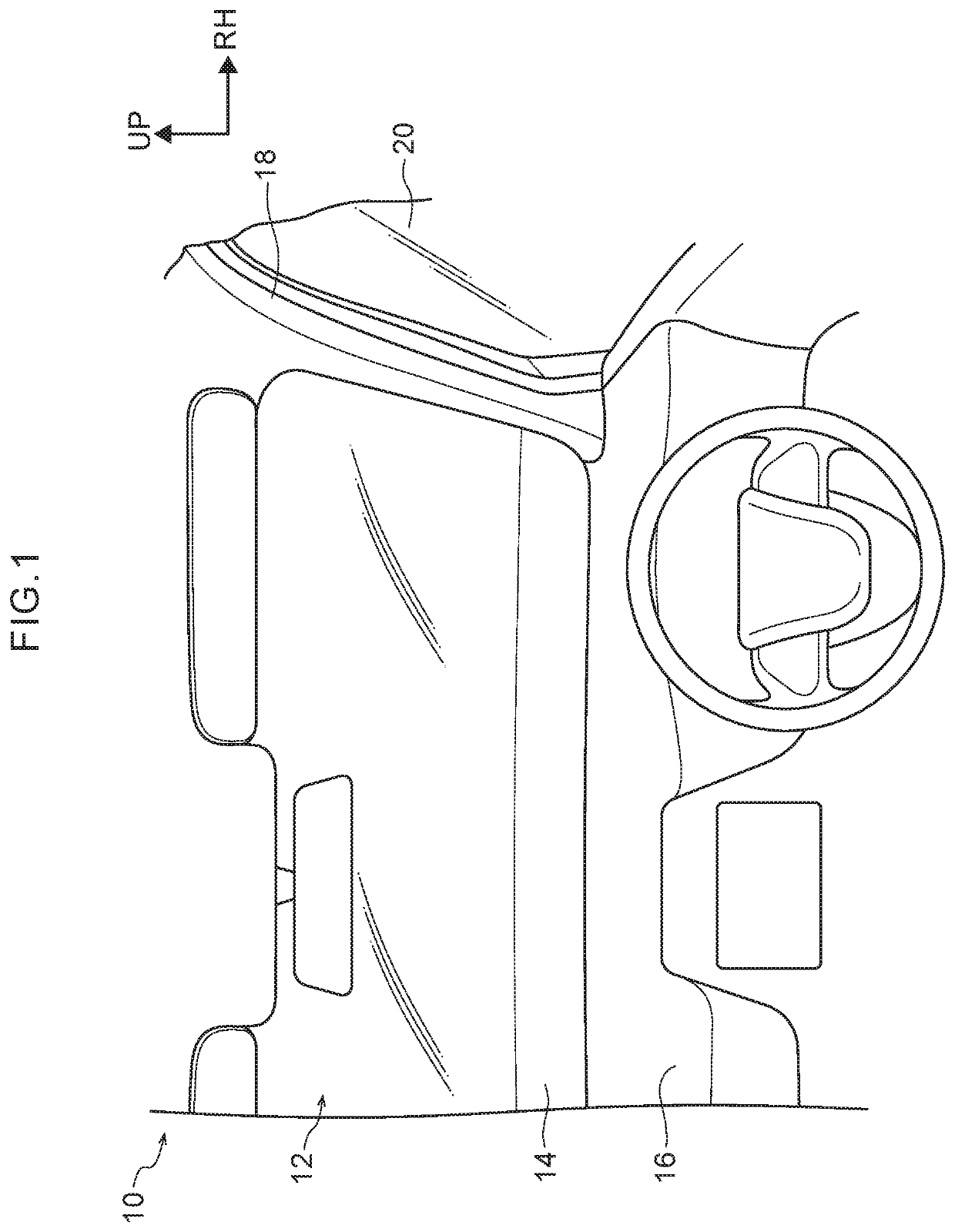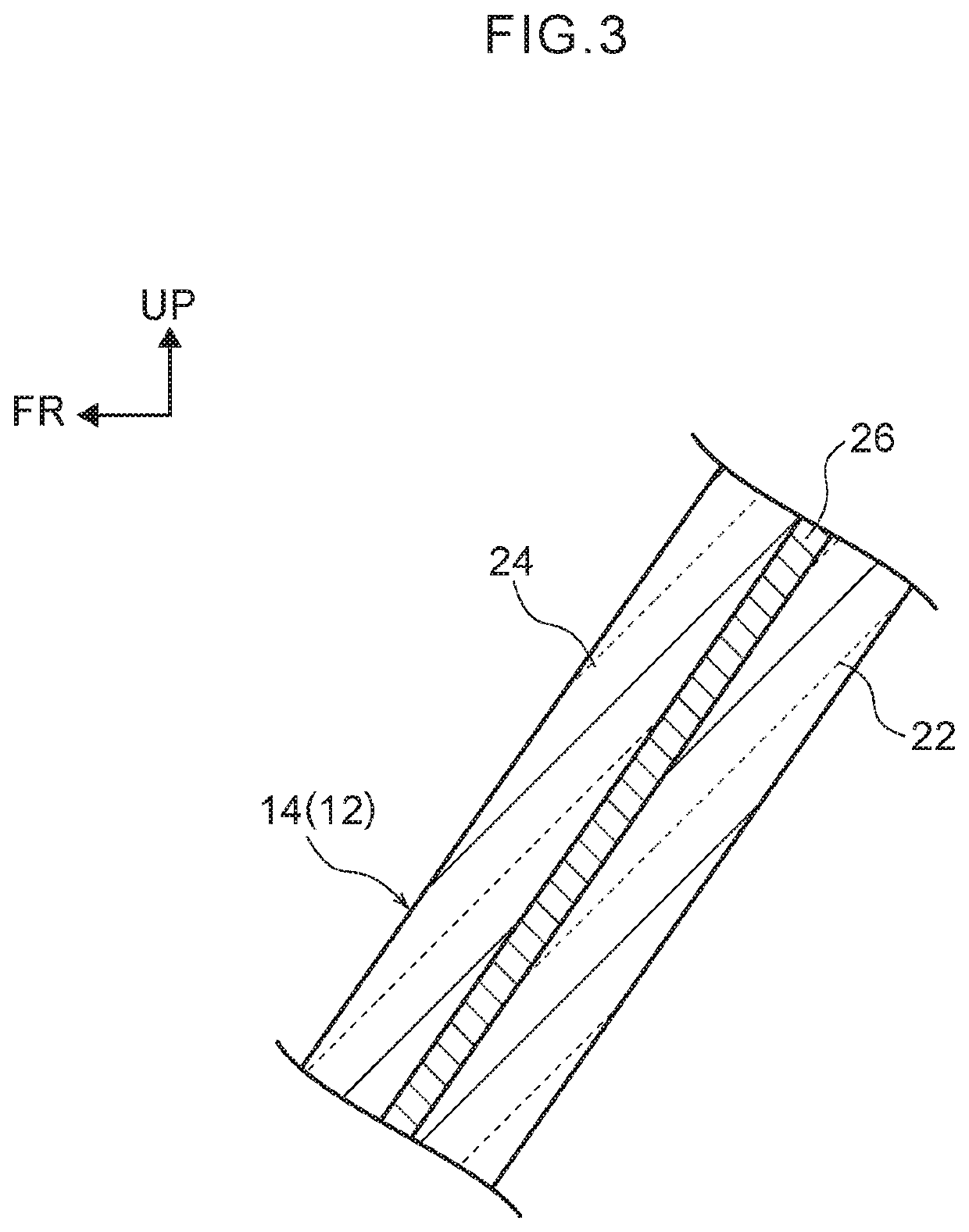Visibility Control Device for a Vehicle
- Summary
- Abstract
- Description
- Claims
- Application Information
AI Technical Summary
Benefits of technology
Problems solved by technology
Method used
Image
Examples
first exemplary embodiment
[0031]Next, a visibility control device for a vehicle according to the exemplary embodiments will now be described using FIG. 1 through FIG. 10. Note that an arrow FR, an arrow RH, and an arrow UP that are illustrated in the appropriate drawings respectively indicate a front side in a vehicle front-rear direction, a right side in a vehicle width direction, and an upper side in a vehicle up-down direction. Hereinafter, if simple front-rear or up-down directions are used in the following description, then, unless specifically stated otherwise, these refer respectively to the front-rear directions of the vehicle and the up-down directions of the vehicle. Additionally, the following description and drawings may be simplified where this is appropriate in order to clarify the description.
[0032]As illustrated in FIG. 1, a windshield 12 is provided in a front end portion of a vehicle cabin of a vehicle 10 in which a visibility control device for a vehicle according to the present exemplary ...
second exemplary embodiment
[0071]Next, a visibility control device for a vehicle according to a second exemplary embodiment will be described with reference to FIG. 7 and FIG. 8. Note that structure of the second exemplary embodiment that is similar to that of the first exemplary embodiment is given the same descriptive symbol, and any description thereof is omitted where appropriate.
[0072]The present exemplary embodiment differs from the first exemplary embodiment in that the light-shielding portion 14 has plural light-shielding states (S1 through S4).
[0073]As is illustrated in FIG. 7A, in the visibility control device for a vehicle according to the present exemplary embodiment, the light-shielding portion 14 has plural light-shielded areas from S1 through to S4. These respective light-shielded areas have mutually different surface areas, and the surface area of the light-shielded areas increases towards the vehicle upper side progressively in sequence from the light-shielded area S1 through to the light-shi...
third exemplary embodiment
[0102]Next, a visibility control device for a vehicle according to a third exemplary embodiment will be described with reference to FIG. 9 and FIG. 10.
[0103]The present exemplary embodiment differs from the first and second exemplary embodiments in that the light-shielding portion 14 is replaced by a head-up display device 40 (hereinafter, referred to as a HUD 40).
[0104]In FIG. 9, the HUD 40 is provided on the vehicle front side of a driver's seat. The HUD 40 displays basic vehicle information such as the traveling speed of the vehicle 10 and the like by linking with various instruments such as, for example, meters and the like (not illustrated in the drawings).
[0105]The HUD 40 is incorporated into the instrument panel 16 of the vehicle, and is provided with a light source portion 40A that is formed by light sources such as, for example, LED and the like, and with a transparent display portion 40B that is provided in front of the instrument panel 16, and that projects light emitted ...
PUM
| Property | Measurement | Unit |
|---|---|---|
| Time | aaaaa | aaaaa |
| Surface area | aaaaa | aaaaa |
| Light | aaaaa | aaaaa |
Abstract
Description
Claims
Application Information
 Login to View More
Login to View More - R&D
- Intellectual Property
- Life Sciences
- Materials
- Tech Scout
- Unparalleled Data Quality
- Higher Quality Content
- 60% Fewer Hallucinations
Browse by: Latest US Patents, China's latest patents, Technical Efficacy Thesaurus, Application Domain, Technology Topic, Popular Technical Reports.
© 2025 PatSnap. All rights reserved.Legal|Privacy policy|Modern Slavery Act Transparency Statement|Sitemap|About US| Contact US: help@patsnap.com



